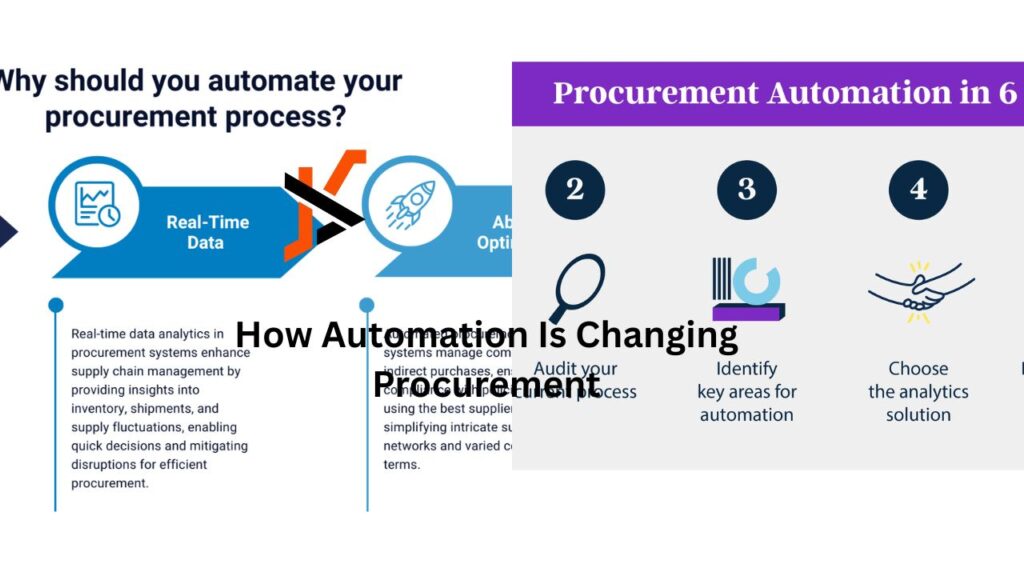Procurement has long been recognised as a cornerstone of organisational efficiency and financial performance. Yet, for many years, the function relied heavily on manual processes, paper-based approvals, and disconnected systems. The result was a time-consuming, error-prone process that limited visibility and agility.
Today, automation is redefining procurement from the ground up, effectively transforming it from an administrative task into a strategic enabler.
From Manual Workflows to Intelligent Operations
The traditional procurement model often involved repetitive steps: raising purchase orders, obtaining approvals, managing supplier communications, and monitoring contract compliance. These tasks consumed countless hours and were vulnerable to human error.
Automation replaces those manual touchpoints with intelligent, rule-based workflows. Modern systems can automatically validate data, flag discrepancies, and route approvals to the right stakeholders within seconds. This shift not only speeds up processes but also ensures consistency and compliance at every stage of the procurement cycle.
Data-Driven Decision-Making
One of the most significant advantages of automation is access to real-time data. Instead of relying on historical reports or fragmented spreadsheets, procurement teams can now see up-to-date information on spending, supplier performance, and contract milestones.
With automation, decision-makers can analyse trends, identify potential risks, and uncover cost-saving opportunities before they impact the business. Predictive analytics and machine learning further enhance these capabilities, allowing teams to forecast demand, negotiate smarter, and plan strategically.
Enhancing Compliance and Reducing Risk
Compliance has always been a key priority in procurement, particularly for public sector organisations and heavily regulated industries. Automated systems help enforce compliance by embedding policy controls into daily workflows.
For instance, automated alerts can notify teams when contracts are nearing expiry or when a supplier fails to meet performance thresholds. Platforms such as advanced contract management software make it possible to centralise all contract data, track obligations, and generate audit-ready reports, ensuring full transparency and accountability.
By digitising documentation and automating monitoring, organisations can significantly reduce the risk of non-compliance, financial leakage, and supplier disputes.
Streamlining Supplier Relationships
Strong supplier relationships are vital for long-term success, and automation enhances collaboration by improving communication and performance tracking.
Supplier portals, for example, allow vendors to upload documents, update details, and view payment statuses without requiring constant back-and-forth emails. Automated performance dashboards make it easy for procurement teams to assess supplier reliability, delivery times, and quality metrics, turning subjective impressions into measurable insights.
As a result, relationships become more transparent, efficient, and mutually beneficial.
Empowering Strategic Procurement Teams
Automation doesn’t replace procurement professionals; it empowers them. By taking over repetitive, low-value tasks, technology allows teams to focus on strategic objectives such as sustainability, innovation, and long-term value creation.
Instead of spending time reconciling data or chasing approvals, procurement leaders can engage suppliers in strategic discussions, explore market trends, and align procurement goals with wider organisational strategy.
This evolution marks a shift in perception: procurement is no longer just a cost-control function. In fact, it’s a driver of growth and innovation.
The Future of Procurement Is Digital
As automation continues to evolve, its role in procurement will only expand. Artificial intelligence, robotic process automation (RPA), and predictive analytics are set to become standard features across procurement systems.
Organisations that embrace these technologies now will gain a competitive edge through efficiency, transparency, and smarter decision-making. Those who delay adoption risk falling behind in both agility and performance.
Ultimately, the future of procurement lies in intelligent automation. By integrating tools like modern contract management software, organisations can streamline processes, reduce risk, and unlock the full strategic potential of their procurement function.

